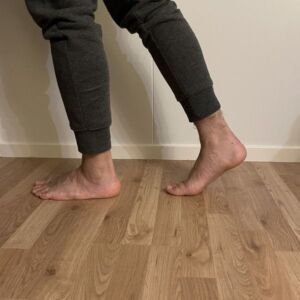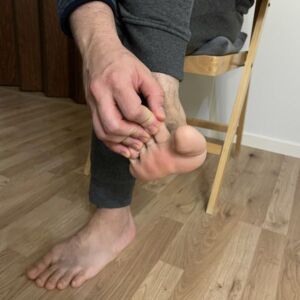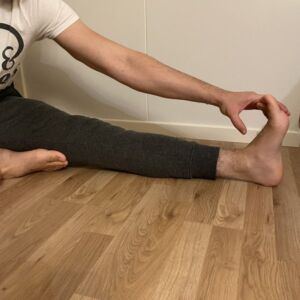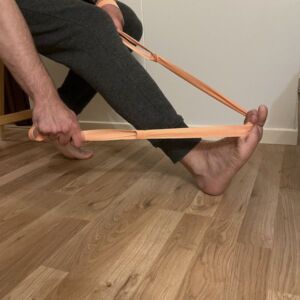How To Stretch Flexor Digitorum Longus With 4 Effective Stretches and PNF Stretching Technique
Flexor Digitorum Longus (FDL) is a deep muscle located on the back of your lower leg. This muscle’s function is flexion of the 2-5 toes.
Longus means this muscle attaches to the distal phalanges of toes and it’s longer than flexor digitorum brevis.
When walking, this muscle is active every time you push your toes off the ground and take a step in every possible direction.
Additionally, flexor digitorum longus helps you move your ankle into plantar flexion.
Now that you have basic knowledge about FDL muscle, let’s see 4 effective stretches for flexor digitorum longus.
Related articles: Stretches for extensor digitorum longus, How to stretch extensor hallucis longus, Stretches for flexor hallucis longus
Stretching Exercises for Flexor Digitorum Longus
1.Standing FDL Stretch
From the standing position, place your toes on the ground while keeping the heel slightly up off the ground. Push with your toes downward and lift your heel even more up. Hold for 30s.

2.Seated FDL Stretch
While seated in a chair, grab your toes with your fingers and gently pull your toes up, into extension. Add ankle dorsiflexion to increase the stretching even more and to target the other muscles from the same compartment group as flexor digitorum longus. Hold for 30s.

3.Straight Leg FDL Stretch
Keep one leg straight while sitting on the ground. Grab your foot with your hand and pull both toes and foot toward your body. Hold for 30s.

4.Seated FDL Stretch With Strip
Hold one knee extended while you’re sitting and place the strip/towel/belt beneath your toes. Pull your toes toward your body. Find the pleasant stretching intensity and hold for 30s.

How to Find Flexor Digitorum Longus
Lay down on your stomach (prone position) and bend your knee to relax gastrocnemius muscles. Your friend/therapist should palpate the back side of your Tibia bone, starting from the middle ⅓ part and going downward. Bend your 2-5 toes to make it easier to palpate FDL muscle.
PNF Stretching Technique for Flexor Digitorum Longus
One of the most effective ways to stretch and relax the flexor digitorum longus is through contract-relax PNF stretching technique. You don’t need any stretching equipment, but you should know some tricks on how to perform this technique.
I will share these tips with you, for free!
Start from the seating position and place your ankle in a neutral position. Grab your toes with your fingers, and passively stretch your toes and foot into extension.
Then, push your toes against your fingers, trying to flex your toes, but without moving them. The intensity of this static muscle contraction doesn’t have to be strong but hold for 6s.
After that, relax and increase the passive stretch of your toes with your fingers. Hold for 30s.
Repeat the whole process five times.

Continue your stretching journey by reading best books on stretching and flexibility and/or testing out stretching equipment for home use.
